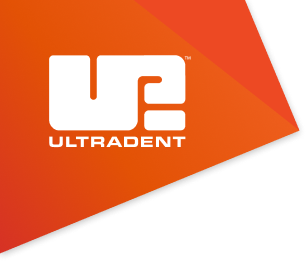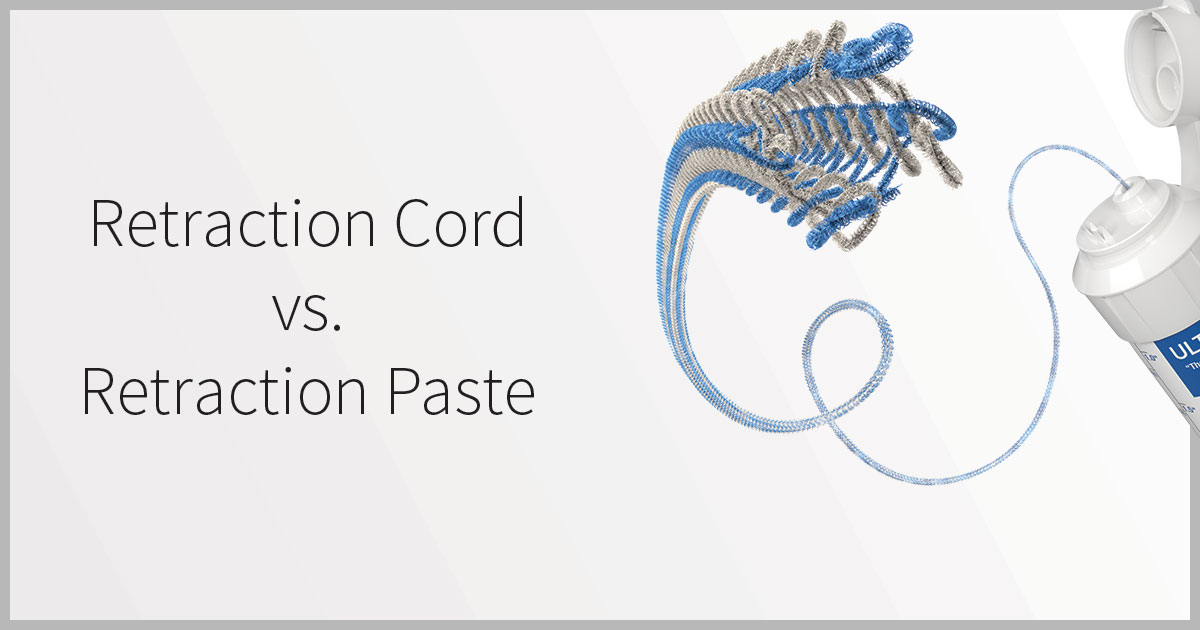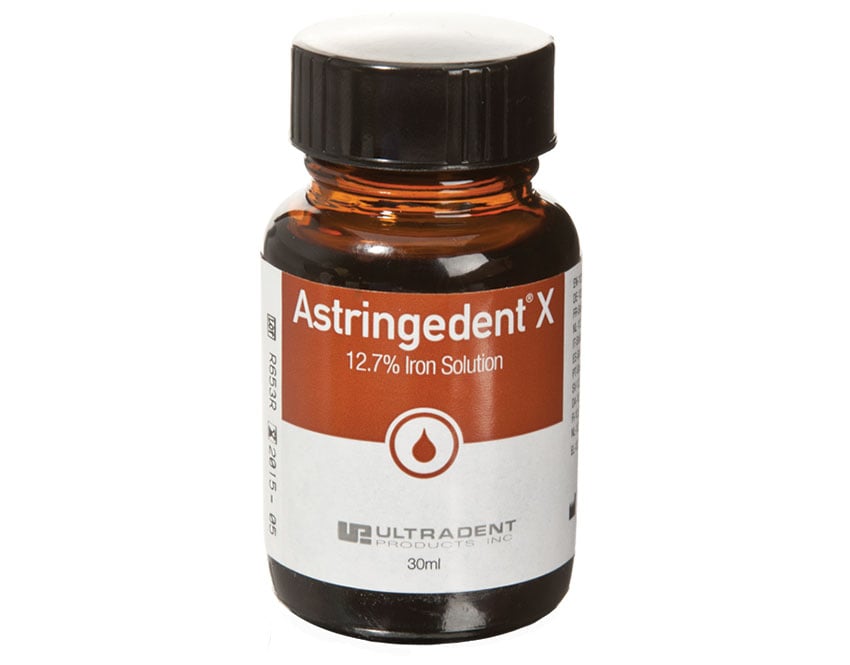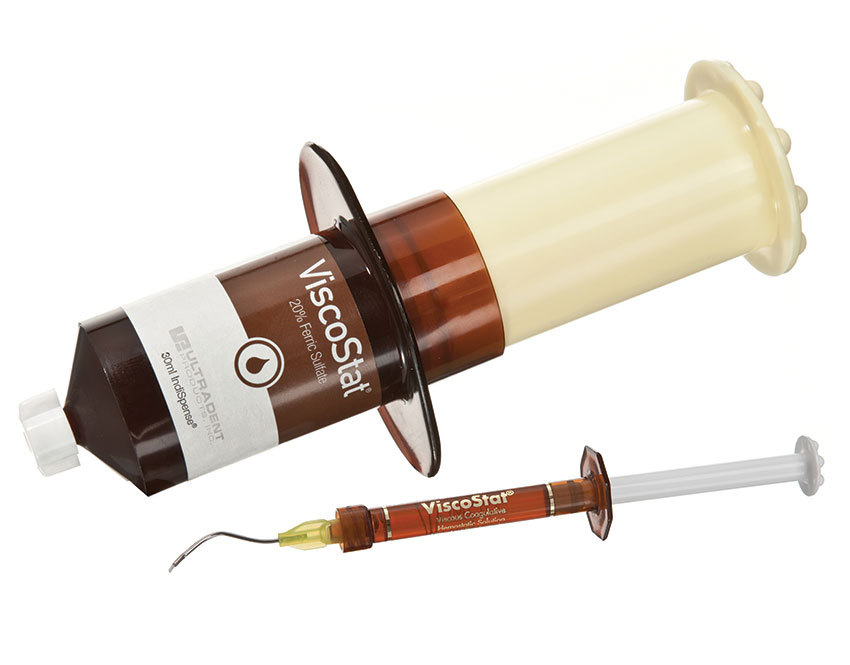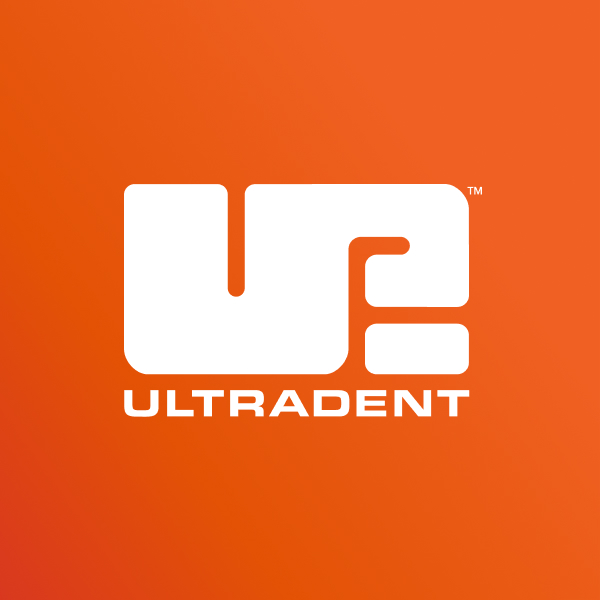As busy clinicians we're always looking for ways to be more efficient and more effective in our practices. One of the latest categories of dental products brought to the market by numerous manufacturers is retraction paste, which is meant to replace traditional retraction cord for tissue management cases.
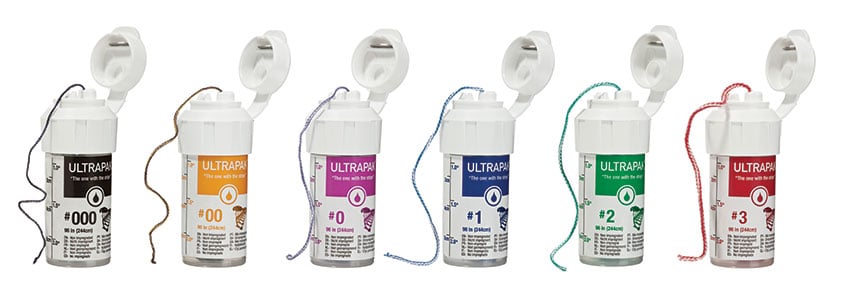
Ultradent's Ultrapak® retraction cord was
tested against popular retraction
pastes on the market to surprising results
Touted as faster and easier to apply, the concept of a retraction paste seems to check the efficiency box, but is it effective? Ultradent's Vice President of Research and Development, Neil Jessop, devised a means of measuring its effectiveness when compared to cord and the results were surprising.

Neil Jessop, Ultradent's Vice President
of Research & Development
In order to accurately and fairly measure the residual pressure exerted by the various brands of retraction paste, Jessop took the following steps:
- He created a load cell with imitation sulcus that contained a small gap where the retraction cord or paste could be applied.
- He then attached the load cell to a meter in order to measure the residual pressure of the paste or cord packed between the imitation sulcus and wall of the load cell.
- He first packed Ultradent Ultrapak® #2 cord into the space between the imitation sulcus and load cell using light pressure.
- He then took popular retraction pastes (first using Expazen by Inibsa Dental and then Dryz Retraction Paste by Parkell, following the same procedure for each) and expressed it into the gap between the imitation sulcus and load cell, pressing it down into the gap to load the area for maximum residual pressure.
After packing Ultradent Ultrapak #2 cord into into the gap between the imitation sulcus and wall of the load cell, Jessop measured the residual pressure the cord exerted on the imitation sulcus at approximately 400 milligrams.
After packing the load cell with Expazen retraction paste the meter read 125 mgs—about a third of the residual pressure the Ultrapak retraction cord exerted. As the seconds ticked by the pressure fell, indicating sulcus rebound. Additionally, Jessop noted the difficulty of cleaning the Expazen paste from the sulcus when compared to regular hemostatic solutions like Astringedent® or ViscoStat® hemostatics, which easily wash away.
Next, Jessop placed Dryz retraction paste into the load cell. With this experiment, he noted that, "Dryz retraction paste has an even lower viscosity than the Expazen, so it's even less able to create retraction than Expazen. In fact," he said, after looking at the meter reading of the residual pressure created by the Dryz retraction paste (less than 25 mgs), "there's almost no retraction pressure measured, and upon being disturbed even the tiniest bit, the reading on the meter goes right back down to zero!"
Jessop also noted that many of these retraction pastes are infused with a hemostatic, but because they are pastes, they do not allow the hemostatic solution to penetrate the tissues, inhibiting the ability to achieve the profound hemostasis needed to get a great impression.
Hemostatics like Astringedent hemostatic must
be scrubbed into the tissues
to achieve profound hemostasis
"You can see that it might take less time to pack a retraction paste in," Jessop noted, "but neither paste provided anywhere near the residual pressure that the cord offers, neither provided predictable hemostasis, and both were difficult to clean up."
Ultradent's award-winning Viscostat hemostatic
Jessop concluded, "This is a classic case of the old adage, 'easy isn't always better.' These products are messy, slow, and fail to get any noticeable retraction. I find that products like these are actually doing a disservice to the industry. You're trying to get meaningful retraction, so in a normal setting, you'd scrub a hemostatic solution like ViscoStat hemostatic or Astringedent hemostatic into the cut tissues to achieve complete hemostasis, and maybe even soak your cord in hemostatic solution, then pack the retraction cord in and you would see as much as 450 mg of pressure on the sulcus compared to 125 or 0 mgs of pressure with the pastes we tried."
The bottom line: retraction cord beats the paste in multiple ways (retraction, hemostasis, and ease of clean-up) by leaps and bounds.
Learn more about Ultradent's Ultrapak retraction cord and its line of award-winning tissue management products.
- 2 kg Sentran load cell (available on Amazon & Sentran.com)
- Sentran meter that pairs (plugs into) the load cell
- Aluminum plate or bar (0.5" thick and 3" long) with a 0.25" step cut out of the top from a local machine or scrap shop
- Silicone material (we used Ultradent's Thermo Clone® impression material)
- Razor blade
- Attach the Sentran meter to the 2 kg Sentran load cell via meter plug
- Screw holes the same size as the mounting holes on the load cell into the silicone bar
- Clamp (screw) the load cell parallel to the highest point of the aluminum bar, ensuring the load cell and the bar run parallel to one another. This will leave an approximately 0.25" space between the bar and load cell.
- Fill in a portion of the space between the bar and load cell (on the end of the space closest to the meter) with silicone material, making a small rectangle of silicone measuring 0.25" by 0.5" to form imitation sulcus.
- When the silicone is completely cured, use a razor blade to carve a 1 mm wide and 3 mm deep slit between the top of the silicone and the bottom of the upper wall of the load cell on the end of the silicone facing the meter. This slit is where the retraction cord or retraction cord paste will be inserted to measure the retraction exerted by the material on the imitation sulcus by the amount of pressure the material puts on the load cell wall.
- Express retraction paste into the space between the silicone (imitation sulcus) and load cell and record the number that registers on the meter. Clean and repeat with other retraction pastes and retraction cord to compare measurements.

